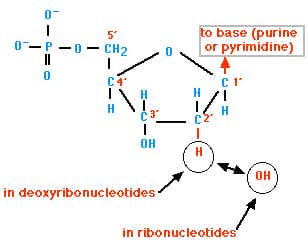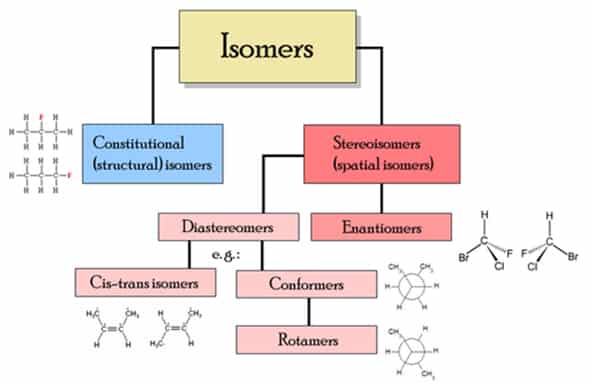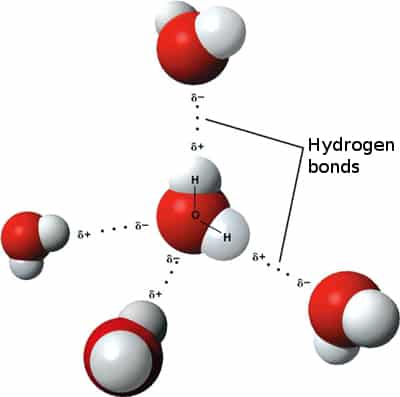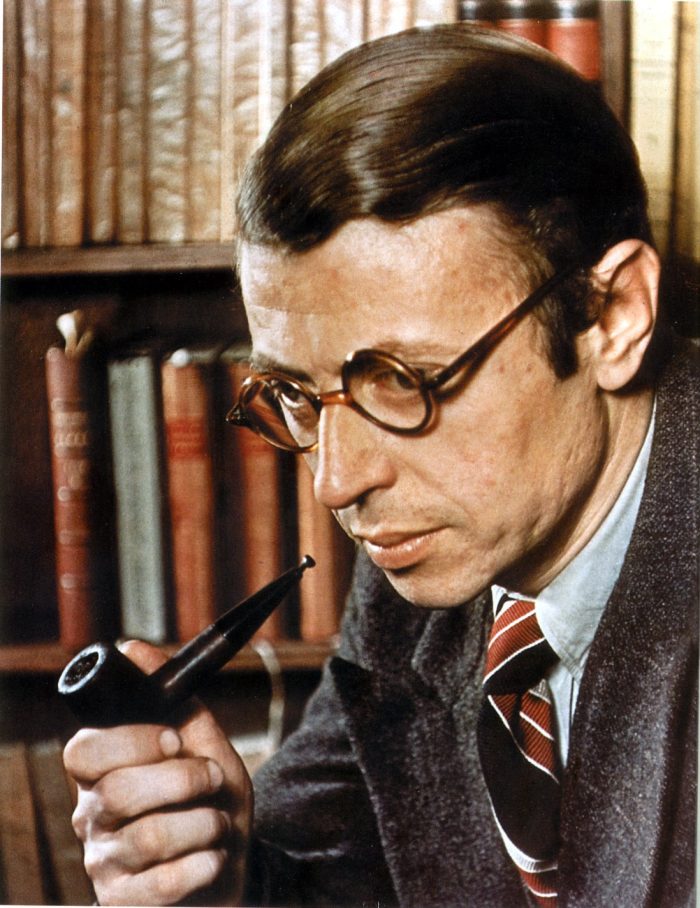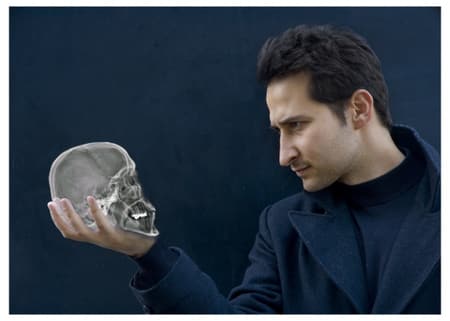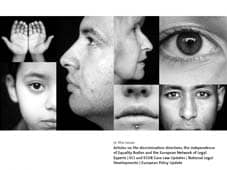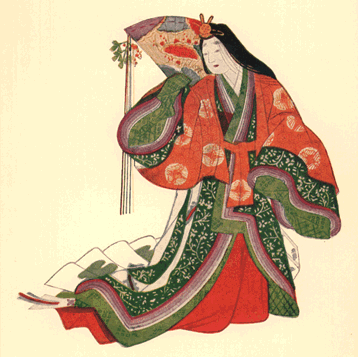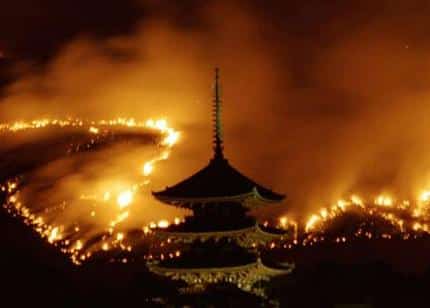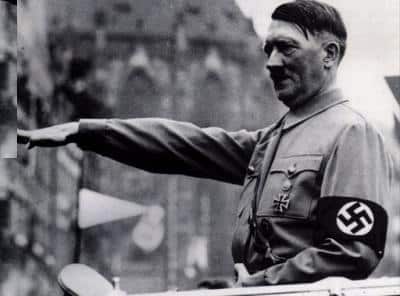William completed his Bachelor of Science and Master of Arts in 2013. He current serves as a lecturer, tutor and freelance writer. In his spare time, he enjoys reading, walking his dog and parasailing.
Article last reviewed: 2022 | St. Rosemary Institution © 2010-2025 | Creative Commons 4.0
DNA or nucleic acid is a polymer of nucleotides. A nucleotide consists of 3 molecules: a 5-carbon sugar (pentose) either deoxyribose (in DNA) or ribose (in RNA) a phosphate attached at the #5 carbon of the sugar an organic or nitrogenous base – a nitrogen containing ring structure – attached at the #1 carbon of…
In chemistry, isomers are compounds with the same molecular formula but different structural formulas. The word is derived from the Greek ισομερης, isomerès; isos = “equal”, méros = “part”. There are many different classes of isomers, like stereoisomers, enantiomers, geometrical isomers (see chart below). Isomers do not necessarily share similar properties, unless they also have…
Water is a unique substance essential to life. It is the most abundant molecule in any cell. The human body is 55-78% composed of water. 1. Polar Molecule – A polar covalent bond is formed between oxygen and hydrogen. The oxygen atom is slightly negative and the hydrogen is slightly positive due to unequal sharing…
VIII Then, the elderly man said, “I have a story that will make you believe in God.” 6 The reason death sticks so closely to life isn’t biological necessity – it’s envy. Life is so beautiful that death has fallen in love with it, a jealous, possessive love that grabs at what it can. But…
The term “modernism” designates a movement in art, literature and music, beginning in the 19thC and lasting into the 20thC, ending approximately with WW II. Art which is modernist may possess the following 12 characteristics: it is psychological in nature and attempts to render individual consciousness or a more subjective reality its depiction of time…
The character of Beloved is a paradigm for an angry, painful sense of memory and suffering. She starts out as a vengeful, willful ghost who haunts Sethe, the woman who gave birth to and also killed her in the past. As soon as Sethe encounters Beloved, while she doesn’t seem to understand or react emotionally…
Existentialists believe that man’s own individual experience or “existing” comes before anything such as a general purpose, goodness or “truth,” or any other Absolute that may be felt to exist. Man creates himself through his own thoughts and actions since the only reality for an individual is that of his own personal existence and nothing…
The Headline Summarise the key information in ten words or less Grab readers’ attention Make main idea clear Compel readers to read on Example — Night says Goodnight: Oxford Professor Fired Over Plagiarism Scandal Opening Paragraph (Summary Lead) Explain the five Ws and one H of the event: all essential info is here Include the…
HAMLET’S STRUCTURE: Like most of Shakespeare’s plays, the act divisions of later editions of Hamlet have little relation to the play’s structure, and there is no break between some scenes. In terms of production, Hamlet has three major movements: Movement One (I.i-I.v). This section sets the action in motion in three main rhythms: 1. the…
Fundamental Freedoms Reflect civil liberties that imply we are free to do what is not prohibited by law These include: (a) freedom of conscience and religion; (b) freedom of thought, belief, opinion and expression, including freedom of the press and other media of communication; (c) freedom of peaceful assembly; and (d) freedom of association. Food…
1. Setting in a castle. The action takes place in and around an old castle, sometimes seemingly abandoned, sometimes occupied. The castle often contains secret passages, trap doors, secret rooms, dark or hidden staircases, and possibly ruined sections. 2. An atmosphere of mystery and suspense. The work is pervaded by a threatening feeling, a fear…
1. Infinitely striving for the unattainable. Trying to achieve something that will never be real. Enjoying the act of always wanting what you can’t have. 2. Powerful love. Heart stirring, often sudden, emotions create a life or death commitment. 3. Uncertainty of reciprocation of love. What is the beloved thinking? Is the lover’s love returned…
Homicide: killing another human being, either directly or indirectly Non-Culpable Homicide: is not criminal and occurs when death is caused by complete accident or in self-defence First Degree Murder: – is planned and deliberate (considered, not impulsive) – victim is a law enforcement agent – occurs while another offensive crime is being committed – occurs…
Activities protected by human rights legislation include employment, accommodation and facilities, and meeting special needs. 1. Employment Everyone has a right to “equal treatment with respect to employment” in the job application process, as well as in training, transfers, promotions, apprenticeship, dismissal, and layoffs. CONSTRUCTIVE AND DIRECT DISCRIMINATION Constructive Discrimination – employment policies that inadvertently…
There are three levels of assault: 1) Simple Assault occurs when an individual Applies intentional force to another person without the other person’s consent Attempting or threatening, by an act or gesture to apply force Approaching or blocking the way of another person while openly wearing or carrying a weapon or an imitation of a…
Movement to “Heian-kyo” known today as Kyoto, capital of Japan from 794 until 1868 Abandoning the Chinese Sent no further missions to China severed continental contact = increasing independence, adaptation The City of Heian-kyo Rectangular about 2 1/2 miles across from west to east and about 3 1/2 miles long from north to south. A stone…
An Introduction Our Records… Japan does not appear in history until 57 CE when it is first mentioned in Chinese histories. In these histories, it is referred to as “Wa.” The Chinese historians tell us of a land divided into a hundred or so separate tribal communities without writing or political unity. Their Records… The…
When writing a News Report on the Literacy Test, you should follow these steps: Analyse the picture and Headline provided (if they are provided) to determine your article’s content. Jot down the 5WH (who, what, where, when, why, and how) of your article in the rough notes section provided on the test paper. Create an…
1. The Jews wanted to denationalize and de-stabilize Germany by: Sowing confusion Lowering the racial level of the highest Dominate the races by exterminating the intelligentsia (intelligent people) Replace them (the intelligentsia) with members of the Jewish race Race mixing, e.g. the Jews brought Blacks in the Rhineland – this led to the cohabitation of…
BLITZKRIEG The German word meaning “lightening war”, the military strategy of softening a country up through intensive air raids followed by rapid use of armoured and infantry units, based on speed and surprise. revolutionary style of hard, fast warfare based on surprise attack the key to its success was close co-operation between the German Panzer…

